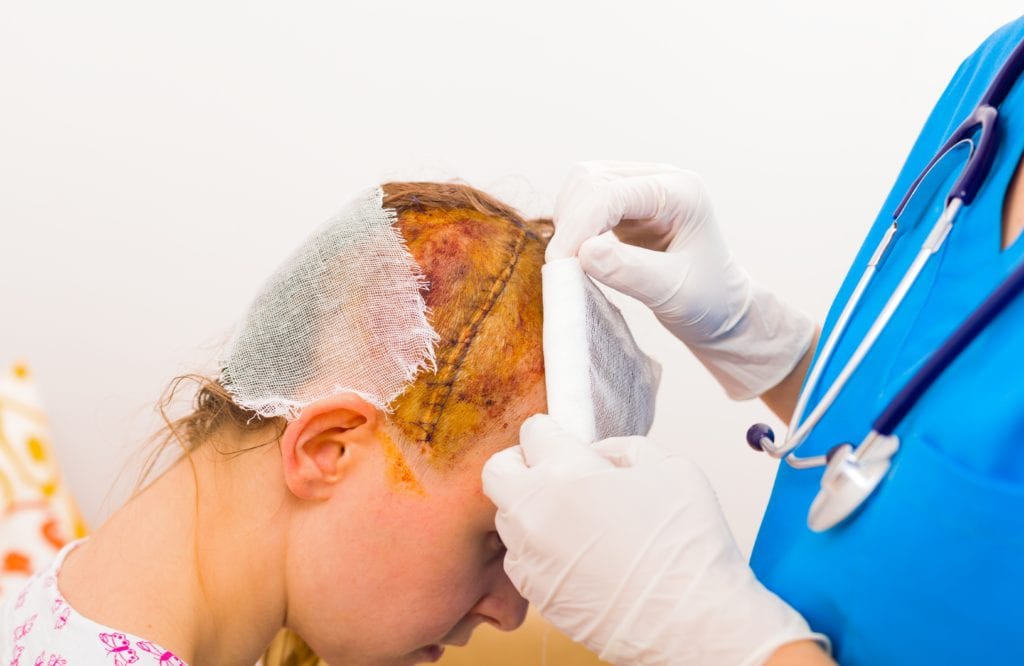“Hello, I’m one of the neurosurgical doctors, I don’t believe we’ve met before” I said, for probably the fifth time that afternoon, as a patient and his wife walked into the brain injury clinic. This is where we review patients who have had serious brain injuries, often from devastating accidents. I had reviewed his scans and notes before calling him in and was surprised to see him walking in; he had had a nasty injury resulting in a prolonged stay on the intensive care unit, multiple operations and eventually a transfer to the rehabilitation unit.
His wife looked at me with a quizzical look, one that suggested she recognized me. As I smiled back politely, she said “You have met us before. I spoke to you in the emergency department”. The memory came flooding back into my head and it became clear that this memory would never leave hers. I recalled speaking to her in the relatives room of the emergency department soon after her husband had arrived, warning her of the severity of his injury and the fact that he “might not survive” the next 24-48 hours. Suddenly aware of the context, I looked back at the patient, even more shocked and overjoyed at seeing the progress he was making. Through her tears, she thanked me any everyone in the hospital for looking after him. I was left contemplating how poorly we are able to predict outcomes after a serious brain injury.
Anyone who has spent any time in neurosurgery has come across patients like this, with devastating head injuries that have gone on to do really well – independent and in the process of reintegrating into society. When, unlike on this occasion, I recognize their names on clinic lists, I look forward to sharing their joy. There are instances, however, where I have instead been faced with a wall of negativity as they complain about everything that’s not quite ‘back to normal’.

Equally, I have come across patients who have had extremely poor outcomes – stuck on a ventilator in the long-term rehabilitation unit, unable to communicate with anyone around them. Surprisingly, the family shower you with praise for your efforts in saving their loved one, eternally grateful despite the seemingly poor ‘objective’ outcome.
Whilst we may be making slow progress in predicting and improving traumatic brain injury outcomes, this is no help for the clinician faced with a severely head injured patient (and perhaps their family) in the emergency department, like my patient above. A common situation is where you think that this is not a survivable injury but the family implore you to “do something” to help their loved one.
In an era of ‘shared decision making’, what do you tell the family? How much are they able to take in given that they’ve just heard that their relative is critically unwell? How much weight do you give to their perspective? Would you change your mind and do an operation if the family were persistent enough?
A recent editorial in the British Journal of Anaesthesia advocated for increased importance to be given to a concept called ‘disability free survival’. The editorial interprets the results of the landmark RescueICP trial as that decompressive craniectomy (an operation to remove a portion of the skull to reduce swelling) for traumatic brain injury “only increases the number of patients in a vegetative state or suffering serious disability, and should therefore not be used”. Whilst the editorial has been rebutted in detail by the authors of the RescueICP study and other commentators (see comments section below the cited article), a few points are worth highlighting, in simple terms:
- What is considered a disability for some may not be considered a disability by others
- The psychological, emotional and social impacts of a certain disability may be very different for different people and their families
- What the doctor or medical team may report as the ‘objective’ outcome may be vastly different from the ‘subjective’ outcome reported by patients and their families
In the heat of the moment, when ‘time is brain’ and a decision needs to be made, none of this may be helpful. There is no time, the family is in a state of shock and can’t have a rational discussion and you are unable to predict the objective outcome.
Under UK law, in situations where the patient cannot consent to treatment, the final decision rests with the responsible medical team, acting in the patient’s best interests. Whilst this may seem surprising to some, I’ve often found families relieved when this is shared with them – they feel I’ve taken the burden of a potentially life-ending decision away from them. During the course of the discussion, with careful explanation, the views of the medical team and patient’s family almost always align – but when they do not, getting second opinions and reaching a resolution expeditiously becomes very important.
Although reading this may not help anyone, I hope it provides some insight into the complexity of the decisions we make, on almost a daily basis.

Mr. Aswin Chari
Great Ormond Street Charity Surgical Scientist
Mr Chari is an academic neurosurgical registrar on the North Thames rotation in London, currently working at Great Ormond Street Hospital.
He is pursuing a PhD at the UCL Great Ormond Street Institute of Child Health, examining single neuron recordings in children undergoing invasive monitoring as part of their evaluation for epilepsy surgery.

Leave a Reply